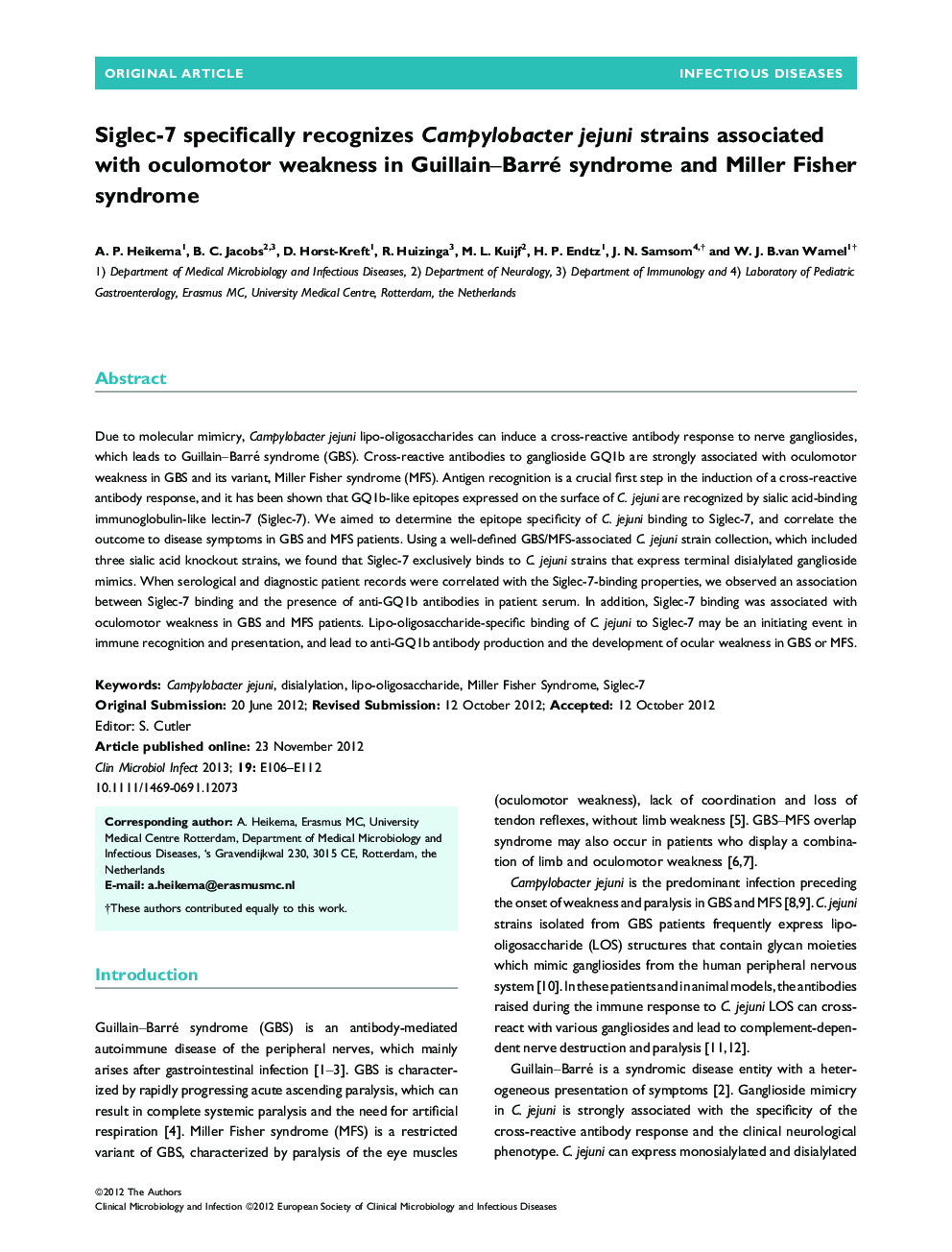| Article ID | Journal | Published Year | Pages | File Type |
|---|---|---|---|---|
| 6131039 | Clinical Microbiology and Infection | 2013 | 7 Pages |
Abstract
Due to molecular mimicry, Campylobacter jejuni lipo-oligosaccharides can induce a cross-reactive antibody response to nerve gangliosides, which leads to Guillain-Barré syndrome (GBS). Cross-reactive antibodies to ganglioside GQ1b are strongly associated with oculomotor weakness in GBS and its variant, Miller Fisher syndrome (MFS). Antigen recognition is a crucial first step in the induction of a cross-reactive antibody response, and it has been shown that GQ1b-like epitopes expressed on the surface of C. jejuni are recognized by sialic acid-binding immunoglobulin-like lectin-7 (Siglec-7). We aimed to determine the epitope specificity of C. jejuni binding to Siglec-7, and correlate the outcome to disease symptoms in GBS and MFS patients. Using a well-defined GBS/MFS-associated C. jejuni strain collection, which included three sialic acid knockout strains, we found that Siglec-7 exclusively binds to C. jejuni strains that express terminal disialylated ganglioside mimics. When serological and diagnostic patient records were correlated with the Siglec-7-binding properties, we observed an association between Siglec-7 binding and the presence of anti-GQ1b antibodies in patient serum. In addition, Siglec-7 binding was associated with oculomotor weakness in GBS and MFS patients. Lipo-oligosaccharide-specific binding of C. jejuni to Siglec-7 may be an initiating event in immune recognition and presentation, and lead to anti-GQ1b antibody production and the development of ocular weakness in GBS or MFS.
Related Topics
Life Sciences
Immunology and Microbiology
Microbiology
Authors
A.P. Heikema, B.C. Jacobs, D. Horst-Kreft, R. Huizinga, M.L. Kuijf, H.P. Endtz, J.N. Samsom, W.J.B. van Wamel,
